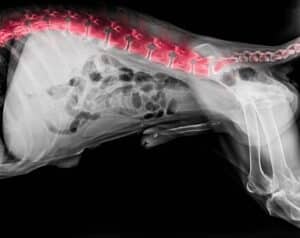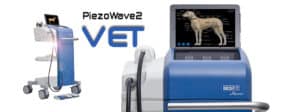🎥 Chapters
00:00 What is PiezoWave Shockwave Therapy?
0:23 Greyhound Racing Injury and TPLO Surgery
1:01 Benefits of Shockwave Therapy for Dogs Knees
1:56 Research Supporting Shockwave Therapy for Dogs
3:50 Personal Testimony of How ESWT Helped Her Dog Run Again
Dog Injuries and Shockwave Therapy

Injured dog can be helped with Shockwave Therapy
Does your beloved dog struggle with aches, pains, or limited mobility? If so, ESWT or extracorporeal shockwave therapy helps dogs with orthopedic conditions such as hip and knee dysplasia, arthritis, tendonitis, tendinosis, and ligament injuries. For instance, studies show that shockwave therapy does great for achilles tendinitis in dogs as well as Cauda Equina Syndrome which can be debilitating for our furry friends. Even dogs who have had surgeries on their knees, hips and elbows can benefit from shockwave therapy.
How does ESWT work your your dog?
Piezowave low-energy focused shockwave machine delivers acoustic waves at prescribed depths into your dog’s tissues. Then these waves send ripples into ligaments, cartilage tendons, scar tissue, bone and even nerve tissue. Additionally, the acoustic waves can break up brittle scar tissue or adhesions, promoting angiogenesis or new blood vessel proliferation and stimulate the growth of new collagen. How important is collagen? Collagen provides structural support to the extracellular space of connective tissues, this is vital to regeneration and tissue normalization. Due to its rigidity and resistance to stretching, it is the perfect matrix for skin, tendons, bones, and ligaments For this reason, shockwave therapy falls under the category of
regenerative medicine.
Extracorporeal shockwave therapy (ESWT) is a non-invasive treatment that has shown promise in promoting angiogenesis, the formation of new blood vessels. When administered, shockwaves are delivered to targeted areas of the body, typically through a device placed on the skin. These shockwaves create waves in the tissue, initiating a cascade of biological responses.
Shockwaves target the damaged tissue, promoting increased blood flow, tissue regeneration, and the release of substances that aid in pain reduction. By initiating these
healing mechanisms, ESWT helps to alleviate pain, improve mobility, and accelerate the recovery process for dogs suffering from Achilles tendinopathy.
How does shockwave therapy relieve pain?
Could shockwave therapy even help my dog with something as serious as Cauda Equina Syndrome?
Extracorporeal shockwave therapy (ESWT) is a promising treatment option for Cauda Equina Syndrome (CES). This a serious condition in which the nerves at the base of the spinal cord become compressed, leading to pain, weakness, and loss of bladder and bowel control. ESWT involves the application of low-energy focused shockwaves to the affected area, which stimulates blood flow, reduces inflammation, and promotes tissue healing. In the case of CES, ESWT can help alleviate pain and improve nerve function by targeting the underlying cause of compression. By promoting tissue repair and reducing inflammation, ESWT can potentially alleviate symptoms associated with CES, improving the quality of life for affected dogs.
How will my dog react during shockwave therapy?
Additionally, ESWT is relatively quick, minimally painful, and does not require anesthesia. We require a muzzle for your dog during the therapy but have never had a dog get aggravated. When the intensity gets too much, dogs just give a look or make a little disapproving sound and we turn the power down a bit. As the scar tissue is broken up, your dog will allow us to turn the power up higher. We seem to get very good feedback from our dogs. So, if you are looking for an effective and low-risk treatment modality for your canine companion, look no further than extracorporeal shockwave therapy.
What else can you do for my dog?

Dog injuries can be helped with Shockwave Therapy
After a observing gait, palpating the area of concern and getting feedback from you, therapies other than shockwave therapy may be needed. These may include alignment, muscle work, home care recommendations and even class IV laser therapy.
By all means, don’t let your dog suffer in silence!
You can reach Dr Fields for in-person (Los Gatos and San Jose, California) or telehealth appointments here.
Shockwave Therapy and Dog Injuries Research
Chen, H., Wurtz, T., Wang, C. J., & Kuo, Y. R. (2004). Extracorporeal shock waves promote healing of collagenase-induced Achilles tendinitis and increase TGF-beta1 and IGF-I expression. Journal of Orthopaedic Research, 22(4), 854-861. https://doi.org/10.1016/j.orthres.2003.11.006
Cheng, J. H., & Wang, C. J. (2015). Biological mechanism of shockwave in bone. International Journal of Surgery, 24(Pt B), 143-146. https://doi.org/10.1016/j.ijsu.2015.09.025
Platt, S. R., O’Brien, D. P., Adams, V., Garosi, L., & Matiasek, K. (2009). Qualitative evaluation of ESWT for treatment of cauda equina syndrome in dogs and cats. Veterinary Surgery, 38(1), 80-85. https://doi.org/10.1111/j.1532-950X.2008.00459.x
*Extracorporeal shock wave therapy improves short-term limb use after canine tibial plateau leveling osteotomy
https://pulsevet.zomedica.com/
Dogs treated with ESWT after TPLO have a faster increase in weight bearing compared with untreated dogs.Extracorporeal shockwave therapy increases comfort and use of the limb while also stimulating bone healing.
*Extracorporeal shockwave therapy for shoulder lameness in dogs
https://pulsevet.com/
ESWT may be considered in dogs with lameness attributable to instability, calcifying, and inflammatory injuries of the shoulder that have not responded to traditional therapies.

